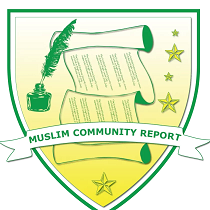Locusts threaten Egypt and Sudan
By Godfrey Olukya 22-2-2013
Egypt and Sudan are treatened by an attack of desert locusts which destroy food crops and any green plant massively.
In a statement issued by by Food and agriculture organization (FAO), desert locust groups were detected in Egypt in November 2012 and initial control operations were performed. In small pockets of a large, remote area of land covering south-eastern Egypt and north-eastern Sudan egg-laying occurred in December and January 2013.
In both countries, survey by control teams from Cairo-based FAO Commission for Controlling the Desert Locust in the Central Region (CRC) have been going on. This is part of the preventive control strategy that the CRC is implementing in the front line member countries of the Central Region, namely, Egypt, Sudan, Eritrea, Ethiopia, Saudi Arabia, Oman and Yemen.
As the current situation is creating concerns about the possibilities that these swarms can ravage agricultural lands in Egypt and Sudan, Mr. Mamoon AlAlawi, FAO Secretary of the Commission for Controlling the Desert Locust in the Central Region has said that locusts currently present in small pockets of a large, remote area covering south-eastern Egypt and North-eastern Sudan are hopper bands, meaning that they are in early stages of their growth and can’t fly or are immature. The latter type needs timely control responses as they can fly from one location to another.
FAO is working in partnership with the Egypt and Sudan governments to control the latest threat from desert locusts. The organization’s emergency center for locust operations based in Rome has defined the current situation as threat level.
Cairo based CRC is in close and constant contact with the General Department for Locust Affairs and Agro-aviation within the Ministry of Agriculture in Egypt, and the Plant Protection Directorate within Sudan’s Ministry of Agriculture.
FAO said that since 2006, the Commission has worked constantly to strengthen surveillance, information sharing and responses to outbreaks across the countries of the region in order to reduce the risks on agricultural production and livelihoods. The countries include Egypt, Sudan, Djibouti, Bahrain, Eritrea, Ethiopia Iraq, Jordan, Kuwait, Lebanon, Oman, Saudi Arabia, Qatar, Syria, United Arab Emirates and Yemen.
Among activities carried out were training Ministry staff in early-detection surveillance and control methods including aerial and ground spraying and organizing joint surveys of desert locust in the breeding areas along both sides of the common border of member countries. The Commission continuously supports and provides the member countries with the necessary references and information regarding desert locust, and with research results and documentations in English and Arabic.
END

